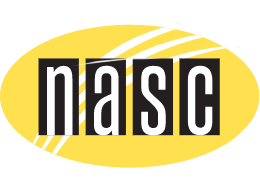Dogs who lick and chew their paws are just as concerning to dog owners as dogs with itchy skin. Both issues can be a sign of a serious problem. In the case of your dog’s feet, any redness or rawness between the toes can mean interdigital cysts.
Here’s what to look for and some things you can do using home remedies for interdigital cysts in dogs.
What Are Interdigital Cysts?
Interdigital cysts in dogs are sores or abscesses between the toes … that are also known as interdigital furunculosis or follicular pododermatitis. They can be one or more fleshy irritations in the webbing of your dog’s paws. There’s usually a bacterial infection that goes along with it.
Signs Of Interdigital Cysts In Dogs
If you see your dog licking or chewing his paws you need to take a closer look. Here’s what you might see.
- Red welts between your dog’s toes (interdigital)
- Wounds that are fleshy, ulcerated or sore
- Spots between toes that are hairless
- Obvious redness plus irritation
- Bleeding
- Itching
- Fluids that include blood or pus
- Trouble walking, limping or favoring his feet
If you spot any of the above symptoms, it’s best to give the problem immediate attention and treatment.
Here’s what you can do right away … so you can both get some relief. Then read on to find out more about interdigital cysts in dogs.
Home Treatment For Interdigital Cysts In Dogs
You can definitely avoid toxic drugs when trying a home treatment. Below are some natural methods to manage interdigital cysts in dogs:
1. Clean The Paws
Step 1: Magnesium can help rid the body of toxins and may also reduce swelling and stiffness. And the best source of magnesium is Epsom salts. Soak your dog’s paws in an Epsom salts bath to open the skin. It will also draw out a foreign body that might be causing the problem.
You can make a foot bath using 1 cup of Epsom salts in a gallon of warm water. Soak your dog’s paws for 10 minutes so have lots of treats and affection standing by.
Step 2: Then you want to clean your dog’s feet with an organic shampoo. Castile soap is a good option. Use about an ounce. Then add ONLY 1-2 drops of an essential oil like garlic, oregano, clove, cinnamon or myrrh (choose one).
Step 3: Now you want to rinse your dog with a conditioner. Make it using 1 oz of almond oil, 1/2 tsp of vitamin E, and 2 drops of myrrh essential oil. Add in some ground organic oats to make it a bit creamy. Using the natural oils in the oatmeal, you’ll be moisturizing dry, cracked paws. This also helps support a normal inflammatory response and support skin health.
Step 4: Next you can dry the paws with your own homemade foot powder. You can use a combination of organic oats or Bentonite clay. Use equal amounts. The high sodium and calcium content will draw out infections and bacteria.
You can also add just a drop or 2 of an essential oil mentioned earlier … along with some vitamin E oil. But keep it powdery. Sprinkle between the affected toes. The clay will help protect against environmental toxins and dry out the wound.
RELATED: Read how to safely use essential oils for dogs …
2. Use Paw Balms, Pastes and Butters
Paw balms provide a coating of protection. When you make them yourself look for natural ingredients that are dog-friendly and edible.
Ingredients For Homemade Balms
Here are ingredients to look for in prepared balms … or to use in your own balms:
- Heavier consistencies like beeswax, shea butter, cocoa butter, candelilla wax
- Sweet almond oil, safflower oil
- Aloe vera – helps heal dry skin and wounds, helps promote a normal inflammatory response
- Niaouli – to support skin health
- Benzoin – for ulcers or cracked skin
- Vitamin E – an antioxidant for blood, brain and skin health
- Essential oils: oregano, garlic, clove and cinnamon - Promotes the body’s innate resistance to pathogens
- Additional essential oils:
- Lavender – helps support a normal inflammatory response
- Chamomile – supports cellular health
- Frankincense – is a disinfectant and astringent that may heal boils, wounds and supports a normal inflammatory response
- Sea Buckthorn – high in antioxidants, and vitamins C and E and may help heal burns & wounds.
Here’s a recipe that makes 4 x 4 ounce jars so you can also halve or quarter the recipe.
Homemade Protective Paw Balm
- 8 tsp beeswax (natural)
- 4 tbsp coconut oil
- 4 tbsp olive oil
- 2 tsp vitamin E oil
- 4 tbsp shea butter
- 4 tsp sweet almond oil
- 2-4 drops of essential oil (see suggestions above)
Slowly melt oils and wax together on the stove. Gently stir in the essential oils. Then pour into jars. Cool and store in a cool location. Rub onto paws as needed. To drip between toes, melt a bit at a time in a container in hot water. Try to keep your dog distracted from licking it for 15 minutes or more to give it time to absorb.
These foot baths can also help the healing process.
3. Do Regular Footbaths
Try to soak your dog’s paws every few days to help healing.
Apple Cider Vinegar (ACV) Soak
Apple cider vinegar may restrict the growth of bacteria like E. coli, S. aureus (staph infection) and yeast like C. albicans (candida).
Add 1 cup of ACV to a bucket of warm water. Soak paws for 30 seconds, dry and apply the foot powder.
Iodine Dip
Iodine disinfects wounds, and will treat yeast overgrowth caused by constant licking or chewing. Add enough iodine to a bucket of warm water to turn it the color of tea. Soak paws for 30 seconds, dry and apply the foot powder. Iodine is non-toxic for dogs so don’t worry if your dog licks his feet.
Baking Soda Rinse
Add 1-2 tbsp of baking soda to a gallon of warm water. Rinse your dog’s feet in it to remove allergens he might pick up from a walk or a hike. It also helps promote skin health.
Herbal Tea Rinse
All-natural herbal teas are healing when added to your dog’s foot bath.
Make a foot bath of these teas separately or combined: chamomile, sage, echinacea, goldenseal or decaffeinated green tea. They have mild astringents that may help heal sores or wounds … plus antioxidant properties to help support skin health. Use a few tea bags to a gallon of warm water, or the ACV soak, and allow to steep. Rinse your dog’s paws for 30 seconds, then air-dry.
Here are some causes of interdigital cysts so you’ll know what to watch for in the future.
Causes Of Interdigital Cysts In Dogs
There are several causes of interdigital cysts.
- An irritation between his toes from an ingrown hair or a foreign body like a twig or thorn. Constant licking breaks down the skin and causes ruptured hair follicles … leading to inflammation and a cyst.
- Atopic dermatitis with red, itchy skin can lead to cysts.
- Eczema caused by allergens like pollen, as well as stress, dry skin, and infection.
- Hair between the toes splits from walking on hard surfaces. Then these split hairs create irritation that can cause cysts.
- Household soaps and cleaners can trigger this and lead to licking.
- Food allergies.
- Environmental allergies.
- Excess weight puts pressure on the feet and between the toes.
- Poor foot conformation.
- Yeast overgrowth, often caused by the licking.
- Mites.
- Hypothyroidism.
You can visit your vet if you need diagnostic tests. A skin biopsy can be done to ensure it’s not cancerous. Your vet can also do a bacterial culture to identify the bacteria or do skin scrapings to check for demodex mites or allergies.
Breeds Prone to Interdigital Cysts
Some breeds are more susceptible to interdigital cysts than others. They include Shar-Pei, Boxer, Bull Terrier, German Shepherd, Dobermann Pinscher, and Pit Bull breeds. Dogs who are overweight or have allergy or thyroid problems are also prone. Dogs with broad paws like Great Danes, Basset Hounds, Mastiffs, Labrador Retrievers and English Bulldogs are also susceptible. Dogs with short fur, bristly hair and excessive webbing may have a higher likelihood of ingrown hairs. But it can happen to any dog.
Veterinary Options For Interdigital Cysts In Dogs
Veterinarians will often offer three options for treatment: surgery, CO2 laser, and/or medication. Surgery can lead to orthopedic issues in the future. CO2 laser will vaporize the cyst but it might take several treatments. It shouldn’t alter your dog’s normal paw structure.
Drugs are usually the first line of defense. Vets often recommend a combined treatment of steroids and antibiotics. They can be given topically for minor issues … or orally, as a systemic treatment.
They may also suggest medicated cloths or protective footwear.
References:
Karen A Moriello DVM DACVD. Interdigital Furuncolosis in Dogs. Merck Veterinary Manual. Updated October 2020.
Yagnik, Darshna, et al. Antimicrobial activity of apple cider vinegar against Escherichia coli, Staphylococcus aureus and Candida albicans; downregulating cytokine and microbial protein expression. Scientific Reports. Volume 8, Article number: 1732 (2018).
Kshirsagar AY, Vekariya MA, Gupta V, et al. A comparative study of colostrum dressing versus conventional dressing in deep wounds. J Clin Diagn Res. 2015;9(4):PC01-PC4. doi:10.7860/JCDR/2015/12004.5739





